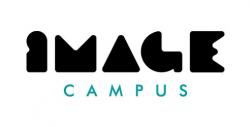
What Does a Lighting Technician Do? Where Do Lighting Technicians Work? ACR Takes a Look.
| College | City | State |
|---|---|---|
| Carnegie Mellon | Pittsburgh | Pennsylvania |
| Chapman University | Orange | California |
| Cogswell Polytechnic College | San Jose | California |
| DePaul University | Chicago | Illinois |
| Flashpoint Chicago | Chicago | Illinois |
| Gnomon School of Visual Effects and Animation | Los Angeles | California |
| Los Angeles Film School | Hollywood | California |
| New York Film Academy | New York | New York |
| SAE Institute | Emeryville | California |
| Savannah College of Art and Design | Savannah | Georgia |
| Sheridan College | Oakville | Ontario |
| The DAVE School | Orlando | Florida |
| Think Tank Training Centre | Vancouver | British Columbia |
| University of Central Florida | Orlando | Florida |
| Vancouver Film School | Vancouver | British Columbia |
What Does a Lighting Technician Do?
In animation, lighting technicians work with the lighting department to create color keys, compositing renderings, and light rigs for shots. In addition to animation skills, lighting technicians use design skills and knowledge of shadows and lighting to create the environments and characters that the project calls for.
Depending on the animation project, lighting technicians use back, key, fill, and background light to illuminate subjects, backgrounds, and scenes. They use a variety of techniques to create appropriate lighting schemes for situations such as a rainy day, underwater, darkness, foggy, sunny, or whatever the project dictates.
Where Do Lighting Technicians Work?
Lighting technicians work for animation studios, gaming companies, film and video production studios, advertising agencies, graphic design firms, and web design firms.
What is the Job Outlook for Lighting Technicians?
The Bureau of Labor Statistics (BLS) does not provide employment or salary information for lighting technicians. For the best idea of what to expect, aspiring lighting technicians seeking employment in the animation industry should consider data for the broader group “multimedia artists and animators.”
Employment multimedia artists and animators is expected to grow 8% for the 2016-2026 decade. This is as fast as average for all occupations. The projected employment growth for animators and multimedia artists will be the result of increased demand for animation and more realistic visual effects in video games, movies, and television. However, job growth may be slowed by companies hiring artists and animators who work overseas for lower wages. The increasing demand for computer graphics for mobile devices may counter slow growth by creating more job opportunities in the massive mobile industry.
Despite average job growth, competition for job opportunities in animation will remain strong. The BLS says, “Opportunities should be best for those who have a wide range of skills or who specialize in a highly specific type of animation or effect.” Additionally, the U.S. is home to an impressive population of 73,700 multimedia artists and animators, making it one of the largest career fields in the world of art and design.
While job opportunities for animators can be found all over the U.S., five states and five industries have the highest employment levels.
States with the Highest Employment Levels for Animators
- California
- Texas
- New York
- Georgia
- Florida
Industries with the Highest Employment Levels for Animators
- Motion Picture and Video Industries
- Computer Systems Design and Related Services
- Software Publishers
- Advertising, Public Relations, and Related Services
- Other Information Services
Industries with the Highest Concentration of Employment for Animators
- Motion Picture and Video Industries
- Independent Artists, Writers, and Performers
- Software Publishers
- Specialized Design Services
- Advertising, Public Relations, and Related Services
Within the top five states with the highest employment levels for animators, along with several others such as Illinois, Washington, and Massachusetts, are the top 10 metropolitan areas with the highest levels of employment. They include:
- Los Angeles-Long Beach-Anaheim, CA
- San Francisco-Oakland-Hayward, CA
- New York-Newark-Jersey City, NY
- San Jose-Sunnyvale-Santa Clara, CA
- Austin-Round Rock, TX
- Atlanta-Sandy Springs-Roswell, GA
- Dallas-Fort Worth-Arlington, TX
- Chicago-Naperville-Elgin, IL-IN-WI
- Portland-Vancouver-Hillsboro, OR-WA
- Boston-Cambridge-Nashua, MA-NH
Other Animation Schools to Consider:
- Winter Park, FL & Online
- Top 50 Nationally for Animation (#14) - 2024
- Top 50 Nationally for Game Design (#12) - 2024
- Top 50 Nationally for Graphic Design (#36) - 2024
- Online
- Top 50 Private Graphic Design Schools in the US (#46) - 2024
- Buenos Aires, Argentina & Online
- Desarrollo de Videojuegos (Tecnicaturas Superiores)
- Producción y Game Design (Tecnicaturas Superiores)
- Arte y Animación para Videojuegos (Tecnicaturas Superiores)
- Producción y Animación 3D (Tecnicaturas Superiores)
- Realización Integral de Dibujos Animados (Tecnicaturas Superiores)
- Tecnicatura Superior en Animación 3D para Videojuegos (Tecnicaturas Superiores) - NUEVA - ONLINE
- Programación de Videojuegos con Unreal, Unity y Godot (Tecnicaturas Superiores) - NUEVA - ONLINE
- Unreal Connectors (Programas Profesionales - 100% Online en Vivo)
- Virtual Production (Programas Profesionales - 100% Online en Vivo)
- Introducción a Unreal Engine (Programas Profesionales - 100% Online en Vivo)
- Diseño de Interacción 3D en Realidad Virtual con Unreal Engine (Programas Profesionales - 100% Online en Vivo)
- Realidad Aumentada con Unity (Programas Profesionales - 100% Online en Vivo)
- Realidad Virtual para Arquitectura (Programas Profesionales - 100% Online en Vivo)
- Audio Inmersivo (Programas Profesionales - 100% Online en Vivo)
- Animación Profesional 3D (Programas Profesionales - 100% Online en Vivo)
- Modelado Profesional 3D (Programas Profesionales - 100% Online en Vivo)
- Visualización Arquitectónica (Programas Profesionales - 100% Online en Vivo)
- Motion Graphics (Programas Profesionales - 100% Online en Vivo)
- VFX (Programas Profesionales - 100% Online en Vivo)
- Environments para Videojuegos con Unreal Engine (Programas Profesionales - 100% Online en Vivo)
- Desarrollo de Videojuegos con Unity (Programas Profesionales - 100% Online en Vivo)
- Game Design (Programas Profesionales - 100% Online en Vivo)
- Concept Art (Programas Profesionales - 100% Online en Vivo)
- Game Art (Programas Profesionales - 100% Online en Vivo)
- Game Audio (Programas Profesionales - 100% Online en Vivo)
- Game Quality Analyst (Programas Profesionales - 100% Online en Vivo)
- Top 25 International Animation Schools - 2024 (#23)
- Online
- Top 25 International Animation Training Programs (#18) - 2024
How Much Do Lighting Technicians Make?
The median annual wage for animators is $72,520. The mean annual wage is $78,230. The lowest average salary (for less than 10% of the animation population) is $40,870. The highest 10% earn more than $124,310. At $86,080, multimedia artists and animators working in the motion picture and video industries have the highest annual wage of the top five industries with the highest employment levels for animators.
- Motion Picture and Video Industries - $86,080
- Computer Systems Design and Related Services - $78,850
- Software Publishers - $85,270
- Advertising, Public Relations, and Related Services - $73,780
- Other Information Services - $80,070
However, the top five highest paying industries for animators are:
- Professional and Commercial Equipment and Supplies Merchant Wholesalers - $99,790
- Aerospace Product and Parts Manufacturing - $90,960
- Motion Picture and Video Industries - $86,080
- Software Publishers - $85,270
- Navigational, Measuring, Electromedical, and Control Instruments Manufacturing - $83,050
It is important to note that salaries for animators also vary by experience, type and size of company, and even geographic location. For example, Connecticut-based animators average $102,630 per year—the nation’s highest average salary for this profession—while South Carolina-based artists average $36,270—the lowest salary for this profession.
In addition to Connecticut, the top five highest paying states for animators are Washington ($90,700), District of Columbia ($89,210), California ($87,960), and New York ($86,490).
The highest paying metro areas for animators are:
- Bridgeport-Stamford-Norwalk, CT - $115,070
- San Jose-Sunnyvale-Santa Clara, CA - $91,850
- San Francisco-Oakland-Hayward - $91,840
- Seattle-Tacoma-Bellevue, WA - $91,010
- New York-Newark-Jersey City - $87,320
- Los Angeles-Long Beach-Anaheim, CA - $86,240
- Savannah, GA - $82,880
- Sacramento-Roseville-Arden-Arcade, CA - $80,230
- Raleigh, NC - $79,070
- North Port-Sarasota-Bradenton, FL - $78,980
How Do I Become a Lighting Technician?
Lighting technicians seeking a position in the animation industry should consider earning a degree in animation, visual effects or a combination of the two. Animation students learn about lighting and texturing, modeling/rigging, drawing for animation, body mechanics in animation, and advanced lighting and texturing techniques. Visual effects students also learn about lighting using programs such as Maya and MentalRay and they learn about surfacing, compositing, modeling, and more. Both program curriculums provide the training needed to be successful in this extremely competitive field.
In addition to a degree in animation or visual effects, employers prefer experience. For entry-level positions, experience through an internship or part-time support position is acceptable. For advanced positions, you will need at least two years’ professional experience in the industry.
Which Schools Offer Programs for Aspiring Lighting Technicians?
- Carnegie Mellon, College of Fine Art - School of Art, BFA Arts & Technology (IDeATe), Concentration Animation & Special Effects, BFA Electronic and Time-Based Media, Focus in Animation
- Chapman University, BFA Animation and Visual Effects
- Cogswell Polytechnic College, BA Digital Art and Animation
- DePaul University, BA, BFA, MA, MFA Animation, BFA Film and Television, Concentration Visual Effects, Minor Visual Effects
- Flashpoint Chicago, A Campus of Columbia College Hollywood, AFA Animation + Visual Effects, BFA Visual Effects
- Gnomon School of Visual Effects and Animation, 2-Year Certificate in Digital Production, Emphasis Visual Effects
- Los Angeles Film School, 36-Month Bachelor’s, Visual Effects
- New York Film Academy, 3D Animation & Visual Effects School, BFA, MFA 2D or 3D Animation, MFA 3D Animation & VFX, Los Angeles Campus, 1-Year Conservatory Animation Program, New York or Los Angeles
- SAE Institute, BAS Animation & Visual Effects
- Savannah College of Art and Design (SCAD), BFA, MA, MFA Visual Effects, Animation
- Sheridan College, 10-Month VFX Graduate Certificate
- The DAVE School, Bachelor’s, Diploma, Visual Effects Production
- Think Tank Training Centre, 1-Year Certificate, VFX, 3D Animation, Game Design
- University of Central Florida, School of Visual Arts & Design (SVAD), MFA Emerging Media – Animation and Visual Effects
- Vancouver Film School, BFA 3D Animation & Visual Effects
Awesome Animation Fact: Not Only did Walt Disney received an Oscar for “Snow White and the Seven Dwarfs,” he received seven smaller Oscars to accompany the larger one.



